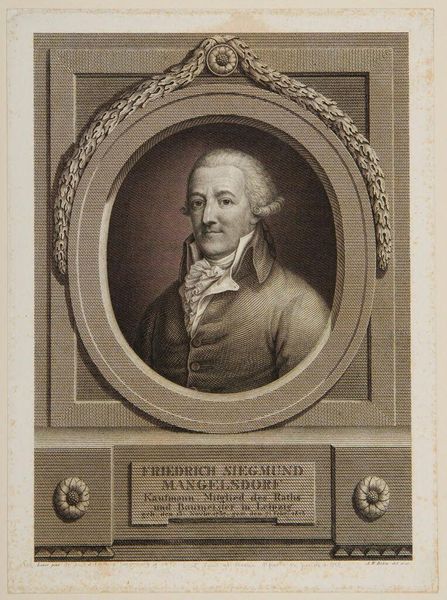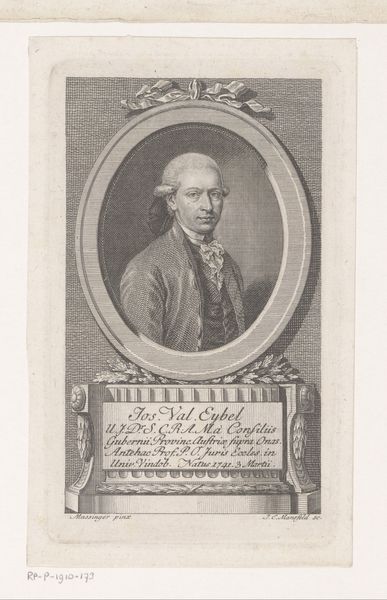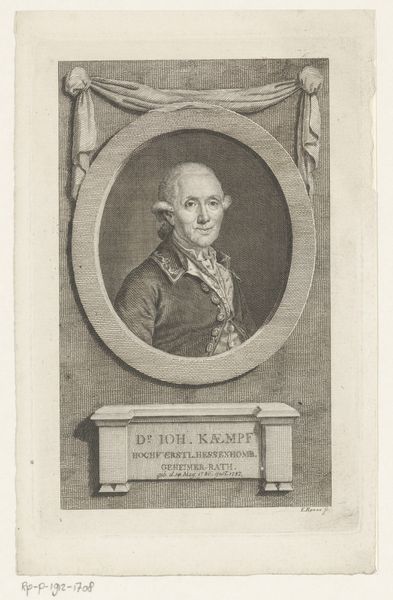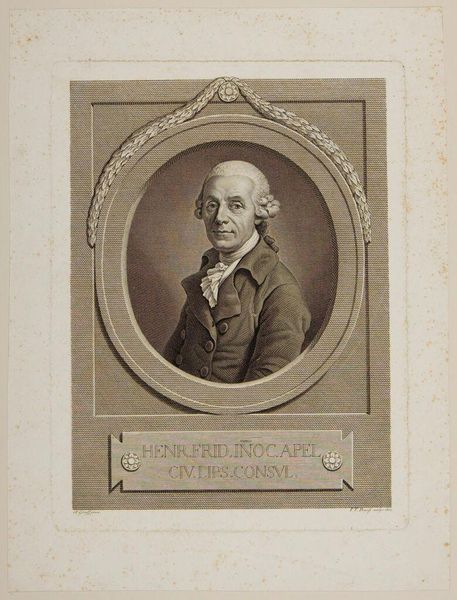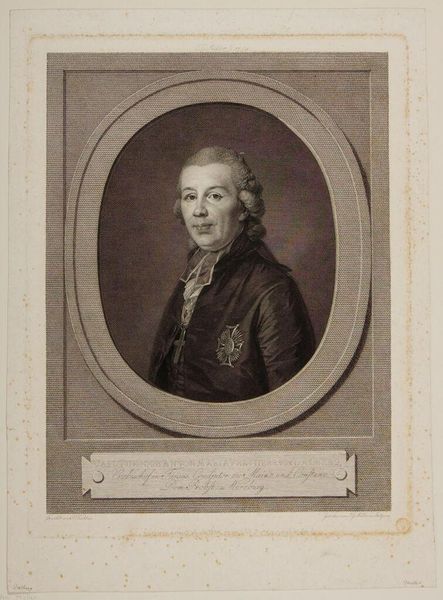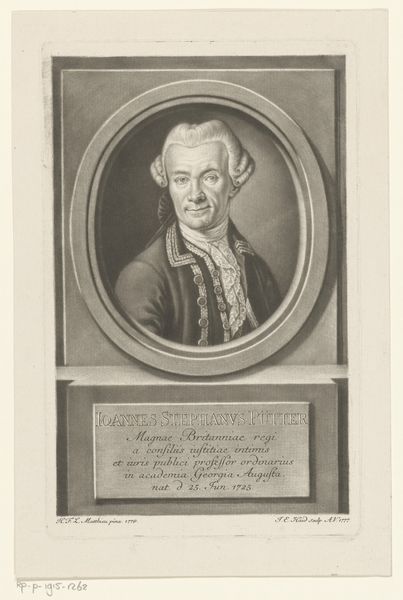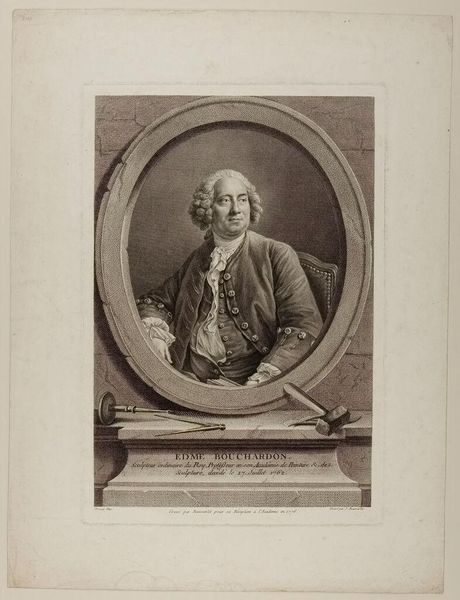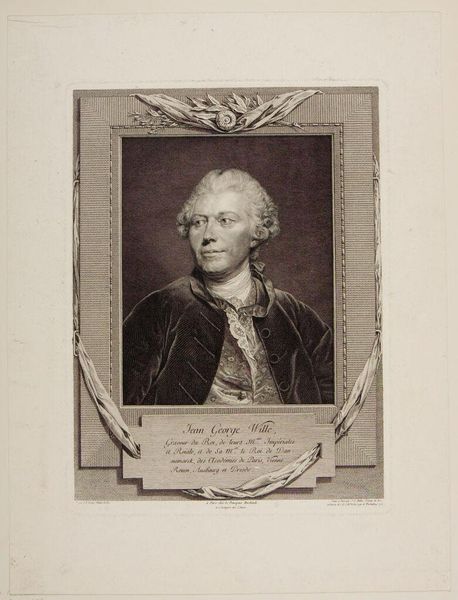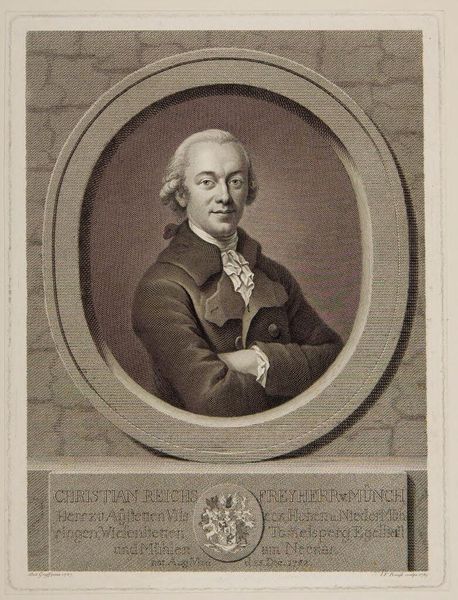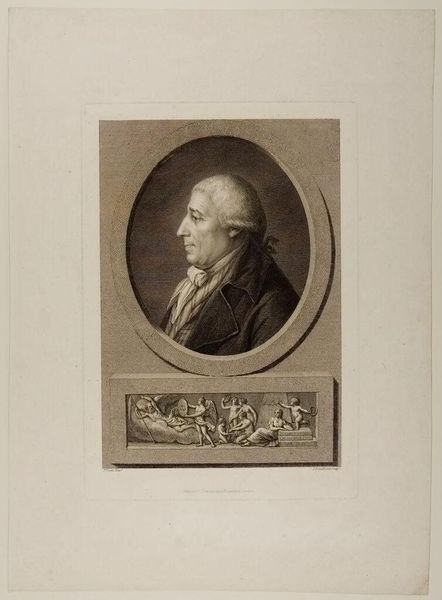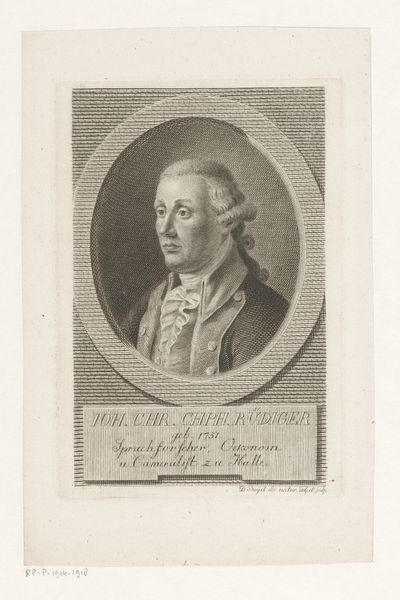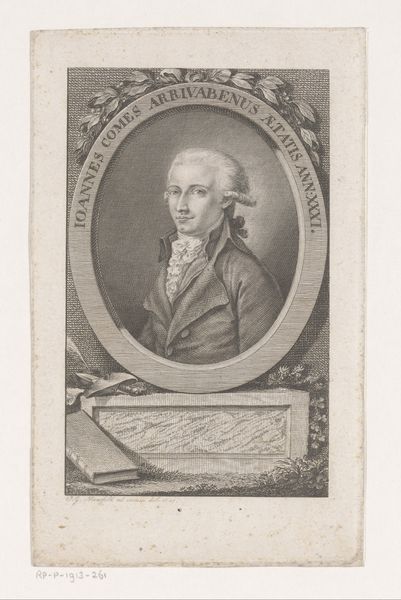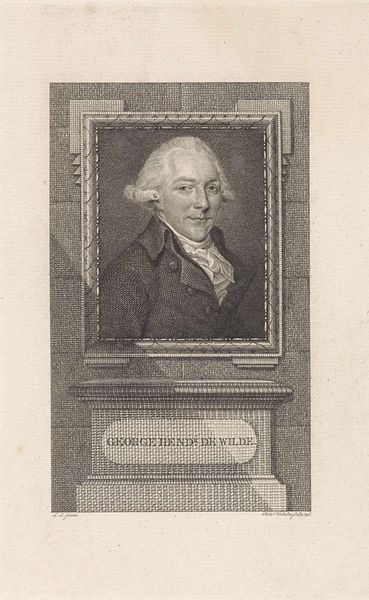
Copyright: CC0 1.0
Editor: Here we have a portrait of Karl Ferdinand Hommel by Johann Friedrich Bause. I'm struck by the detail in the engraving and the composition within that oval frame. What do you see in the way the piece is constructed? Curator: The composition is indeed meticulous. Note the framing devices: the oval, the swags, the inscription panel. They create a hierarchy of visual interest, directing the eye deliberately. How does this calculated arrangement affect your understanding of the subject? Editor: It feels very controlled, almost like Hommel is being presented as a figure of authority. Is that intentional, do you think? Curator: Precisely. The artist employs formal elements—the balanced composition, the precise lines—to convey status and intellect. Notice how the textures, from the smooth face to the patterned background, contribute to this effect. Consider the role of line and form in conveying meaning. Editor: So, the details aren't just decorative; they're actually shaping our perception. That’s something I'll definitely look for in other portraits now. Curator: Indeed, understanding the formal language of art unlocks deeper levels of interpretation.
Comments
No comments
Be the first to comment and join the conversation on the ultimate creative platform.
